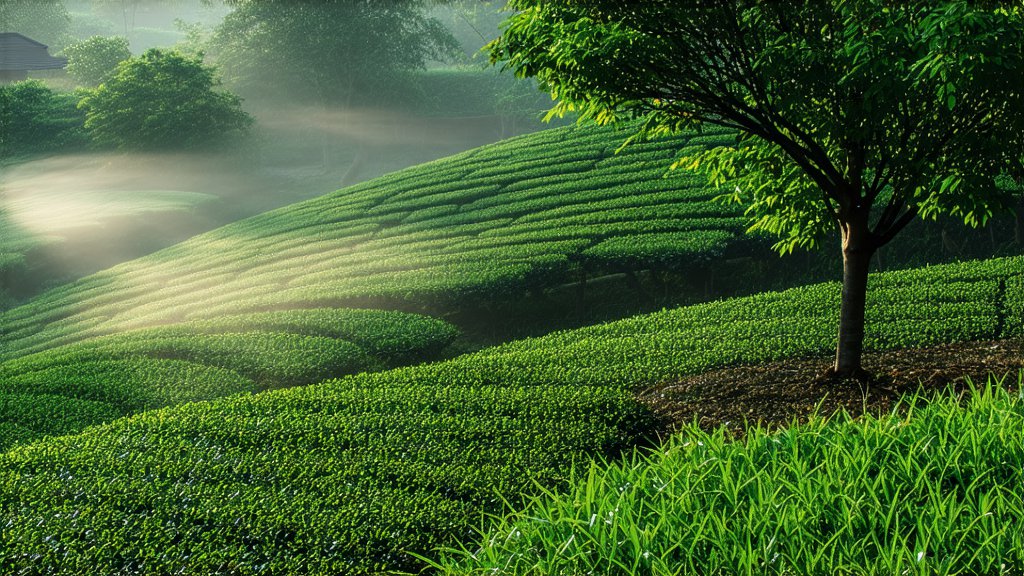
In the heartland of China's Anhui Province lies Qimen County, a region renowned for its picturesque landscapes and, more importantly, its contribution to the world of tea through the creation of Keemun Black Tea. This exquisite variety, often referred to as 'Qimen Hong Cha' in Mandarin, stands as a testament to centuries-old tea cultivation practices intertwined with an unparalleled craftsmanship that has captivated tea enthusiasts globally.
A Glimpse into History
The story of Keemun Black Tea dates back to the Tang Dynasty (618-907 AD), but it wasn't until the 19th century that this tea gained international recognition. It was during this period that British merchants discovered its unique qualities, leading to its widespread popularity in Europe. The name "Keemun," derived from the pronunciation of Qimen County, became synonymous with quality black tea across continents.
Diverse Varieties within Keemun
Keemun Black Tea encompasses several sub-varieties, each with distinct characteristics yet sharing the common thread of exceptional quality. Among them, Gong Mei (High Quality) and Dian Hong Pao (Big Red Robe) are particularly noteworthy. While Gong Mei is celebrated for its delicate flavor and golden tips, Dian Hong Pao offers a more robust taste with hints of orchid and fruit, attributed to the specific terroir and processing methods.
The Art of Crafting Keemun
The journey from leaf to cup for Keemun Black Tea involves meticulous steps that have been refined over generations. Harvested primarily between April and June, only the youngest leaves and buds are handpicked to ensure optimal freshness and flavor. The process begins with withering, where freshly picked leaves are spread out to lose moisture and become limp. This is followed by rolling, which breaks down cell walls to release enzymes necessary for oxidation—the crucial stage where polyphenols react with oxygen, transforming the green leaves into dark brown and developing the tea's characteristic flavors and aromas.
After oxidation, the leaves undergo a careful drying process, first in woks over charcoal fires and then air-dried to perfection. This dual drying method imbues Keemun with a unique smoky undertone, setting it apart from other black teas.
Savoring the Symphony of Flavors
To truly appreciate Keemun Black Tea, one must engage all senses in the tasting experience. Begin by observing the dry leaves, noting their wiry shape and deep chestnut hue. As hot water (around 90°C/195°F) is poured over them, watch the leaves unfurl gracefully, releasing a symphony of scents reminiscent of dried fruits, honey, and a subtle smokiness.
The first sip reveals a complex interplay of flavors—sweet yet earthy, with a smooth texture that glides effortlessly across the palate. Subtle notes of florals and stone fruits emerge on the mid-palate, culminating in a long-lasting, satisfying aftertaste. The liquor itself is a rich amber color, indicative of the tea's depth and body.
Conclusion
Keemun Black Tea is more than just a beverage; it embodies the essence of Chinese tea culture, a harmonious blend of nature's bounty and human ingenuity. Its enduring appeal lies not only in its historical significance but also in the sensory journey it offers to those who take the time to savor it. As you embark on your exploration of Keemun, remember that each cup tells a story—a tale of tradition, terroir, and the artistry that goes into creating this timeless classic.
Whether enjoyed alone as a moment of tranquility or shared among friends in lively conversation, Keemun Black Tea invites you to slow down, breathe deeply, and immerse yourself in a legacy that transcends time and borders.